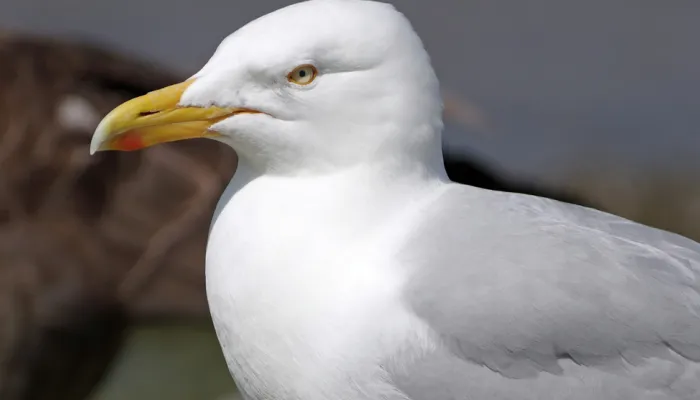| Statistics | |
|---|---|
| Length: | 55cm - 67cm |
| Wingspan: | 130cm - 150cm |
| Weight: | 690g - 1.44kg |
| Average Lifespan: | 12 years |
The herring gull is the typical 'seagull' of our seaside resorts, though our coastal populations have declined in recent decades.
About
The herring gull is a familiar sight of our seaside towns, particularly during the breeding season, though some now nest well inland. In winter it can be found on farmland, wetland and coastal habitats, inland landfill sites, playing fields, and reservoirs throughout the UK. The distinctive red spot on its bill spurred one of the classic studies in animal behaviour in the 1950s, led by Niko Tinbergen. Having seen gull chicks peck at their parents' bills to encourage them to regurgitate food, he tried various dummy, parent shapes and colours to see the chicks' response. He discovered that gull chicks will peck at any long, yellow thing with a red spot in order to get food. In other words, gull chicks have a built-in preference from birth for their parents' bills: a worthwhile survival mechanism.
How to identify
Gulls can be very difficult to tell apart, especially immature birds. Adult herring gulls are silvery-grey above and white below, with pink legs. They have a white head (streaky during the winter) and black wingtips with white spots. They have a yellow bill with a red spot near the tip.
Did you know?
Herring gulls were once thought to be very common around the northern hemisphere. In recent years, however, scientists have realised that there are, in fact, several similar, closely related species of 'herring gull' including the yellow-legged gull, the American herring gull, the Caspian gull and our own, European herring gull.

